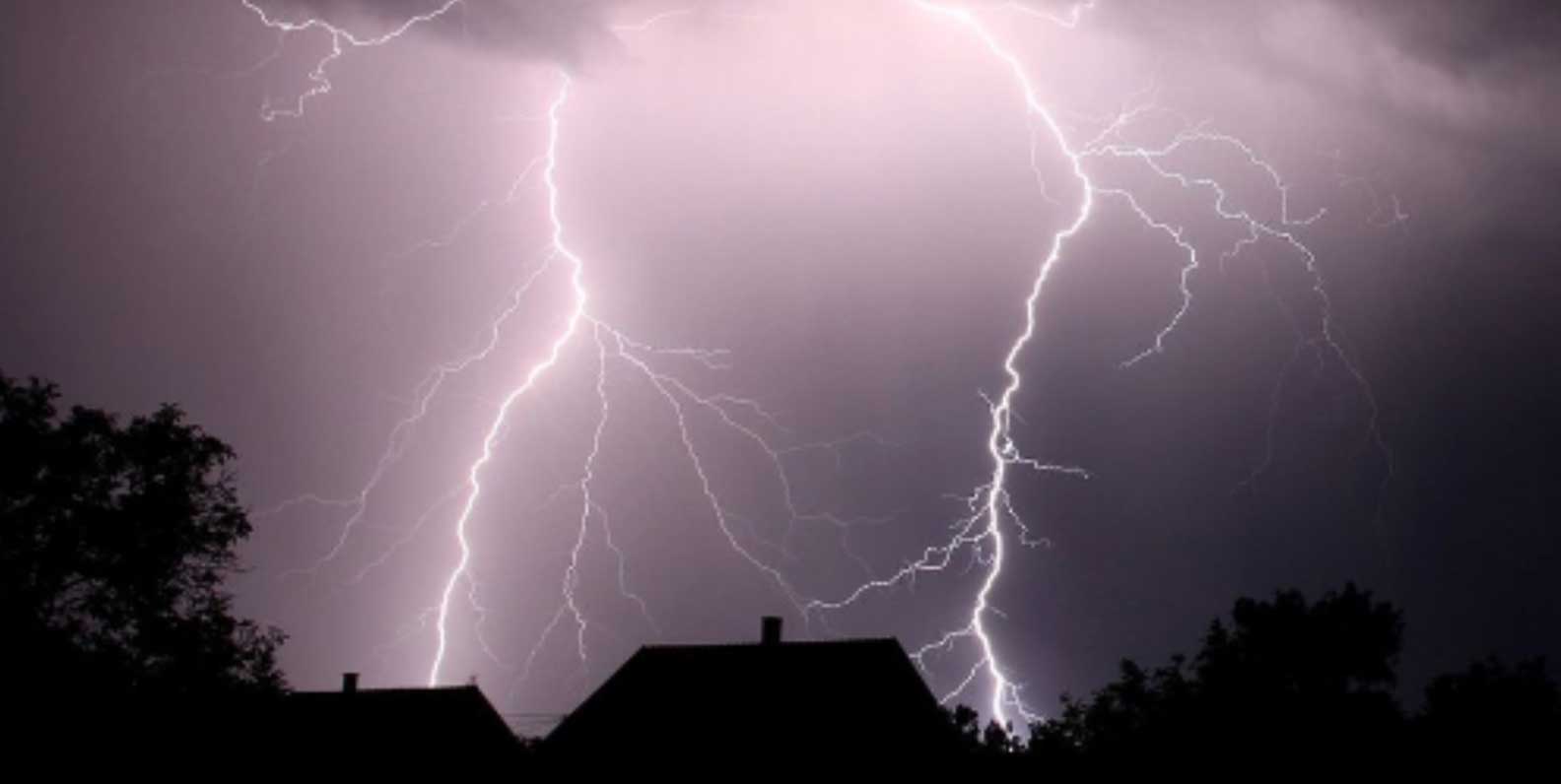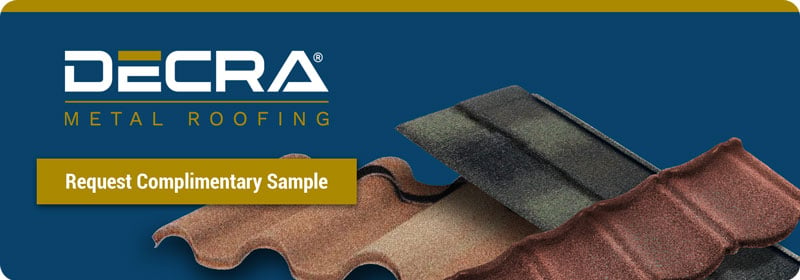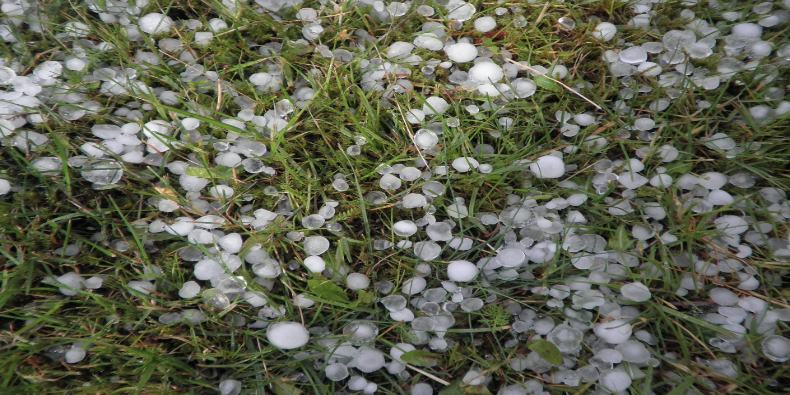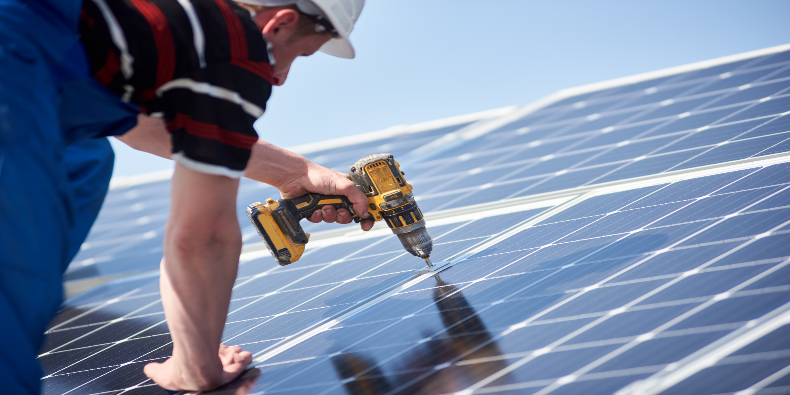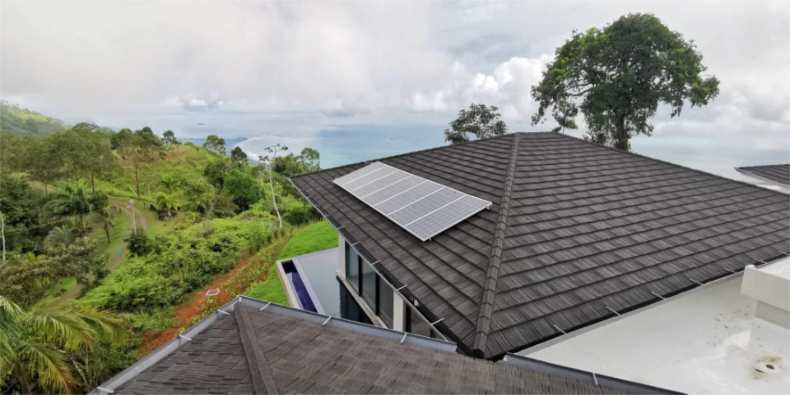Extensive research has proven that metal roofing is no more likely to attract a lightning strike than any other type of roofing material.
In fact, as a non-combustible material with the highest Class A fire-resistance rating, metal roofing is one of the best materials for homes in lightning-prone regions.
When it comes to lightning strikes and roofing, it’s all about fire prevention. If the roof is covered with combustible materials such as wood petroleum-based asphalt shingles, a lightning strike can easily start a fire.
Lightning produces intense heat, and often this heat can cause fires on the roof or inside the house after "jumping" from the roof to the first available path to the ground.
Now, think about how a lightning rod works when placed on top of a building. Made of highly conductive and non-combustible metal, lightning rods are designed to intercept the voltage from a lightning strike and provide a safe and direct path to the ground.
If you live in a lighting-prone region, you’ll want to look for a roof that is made of non-combustible materials and has the highest Class A rating for fire.
Fire Ratings for Roofing Materials
Founded in 1903, Underwriters Laboratories (UL) is a not-for-profit organization that independently tests and certifies products, including roofing materials. Considered the national standard for a roof’s ability to withstand fire, the UL 790 test rates roofing material performance when exposed to fire sources originating from outside the building.
To meet UL standards, roofing materials must provide a degree of protection against flame penetration to the underlying deck and the attic space without producing flying embers, or slipping from their installed position. Based on their performance in the UL790 test, roofing products are classified as either Class A, Class B or Class C–with a Class A rating being the highest.
Class A materials have proven themselves effective against the most severe fire testing. They provide the best protection against flame penetration as stand-alone roofing products with excellent resistance to surface flame spread without the need for chemical treatments or extra underlying roofing materials.
Class B materials are effective against moderate fire exposure. Some roofing materials, such as wood shingles or shake, must utilize fire-retardant chemicals to achieve a Class B rating.
Class C materials are effective against light fire exposure only and include reconstituted wood products such as plywood and particleboard. It’s important to note that some roofing materials require additional underlying materials to achieve a "by assembly" rating of Class A fire resistance. For example, wood shakes typically fall in the Class C category (or unrated) if they are not treated with fire-resistant chemicals. Once treated, they can typically achieve a Class B rating.
Unrated materials are unable to meet any of the above classifications.
What is the best roofing material for lightning?
Here’s a brief overview of how common roofing materials perform when it comes to lightning and fire.
Asphalt Shingles
Asphalt shingles are one of the most common roofing materials, mainly due to the fact that they are the cheapest. Given that asphalt shingles don’t conduct electricity and, as a petroleum-based product, are flammable, they aren’t the best choice for homeowners in lighting-prone regions.
Clay or Concrete Tiles
Concrete or clay tiles are naturally fire-resistant materials and typically come with a Class A fire rating. It’s important to note that while clay or concrete tiles have excellent fire resistance, there is much to be desired when it comes too performance. Simply walking on a tile roof can cause damage, so homes in regions prone to hail, hurricanes, tornadoes or high winds may want to consider a stronger roofing material.
Wood Shingles or Shake
When it comes to fire, a wood roof is one of the worst choices. Wood is obviously a combustible material and as such, it requires substantial treatment and fire-retardant to achieve a Class B or Class A fire rating. Insurance carriers typically won’t insure homes with wood roofs in wildfire areas, even after they’ve been treated with fire-retardant, so if you live in a lighting-prone or fire-prone region, you’ll probably want to avoid a wood roof.
Metal Roofing
As mentioned earlier, metal roofs do not attract lightning. In fact, a metal roof can actually make a lightning strike much less dangerous. As a naturally non-combustible and conductive material, a metal roof with an installed lightning protection grounding system provides an easier path to the ground, spreading the force out from the lightning strike and preventing concentrated hot points. Nearly all metal roofing products have a Class A rating for fire and are resistant to nearly anything Mother Nature has to offer.
Industrial Strength Durability of Metal Roofing
Metal roofing products are the second most popular roofing material in the U.S. and growing in popularity year over year. The popularity of metal roofing is due to its longevity, durability and high ROI. Noteworthy benefits of a metal roof include:
- Longevity: A metal roof has a lifespan that is two to three times longer than traditional roofing materials, such as asphalt shingles.
- Energy Efficient: Metal roofs are one of the most energy-efficient materials on the market and can reduce cooling costs by up to 25%.
- Insurance Discounts: A metal roof can lower your homeowner’s insurance by up to 35%. (Check with your local insurance carrier for available discounts).
- ROI: A metal roof can increase home value by up to 6%.
As one of the most durable roofing products, metal roofs boast impressive claims when it comes to withstanding the elements, including:
- Hail: The highest Class 4 rating for hail impact.
- Wind: The ability to withstand hurricane-force winds.
- Fire: The highest Class A rating for fire.
- Snow and Ice: Non-porous metal can easily withstand repeated freeze and thaw cycles.
>>>Related Resource: Read 10 Things you need to know about metal roofing.
One minor drawback of metal roofing is that some products, such as standing seam metal roofs, can lack the aesthetics and design versatility required for residential properties. For homeowners who want the industrial-strength performance of a metal roof without industrial aesthetics, stone-coated metal roofing is the perfect choice.
Stone-coated metal roofing bridges the gap between industrial durability and design versatility, giving homeowners the benefits of industrial metal roofing without sacrificing on style.
Strength and Style with Stone-Coated Metal Roofing
Made from multiple layers of durable stone-coated steel, DECRA Metal Roofing offers a comprehensive line of stone-coated metal roofing products that can achieve the look of traditional roofing materials.
Metal Tile Roofing
Whether you’re looking for the robust form of barrel-style Spanish tile or the distinctive S-shape of Classic Mediterranean scalloped tile, DECRA Villa Tile and DECRA Tile provide the classic beauty of tile with the strength and durability that only steel can provide.
Metal Shingle Roofing
For designs that rely on the thick-cut edges and dimensionality of asphalt shingles, DECRA Shingle XD effortlessly provides the same colors and textures, but lasts two to three times longer.
Wood Shake Roofing
Available in two rustic styles, DECRA Shake XD and DECRA Shake eliminate the shortcomings of traditional wood roofing, have the highest Class A rating for fire, and still look vibrant decades after installation.
Since 1957, DECRA Metal Roofing products have withstood the elements in some of the harshest climates around the world. Our stone-coated metal roofs have the highest Class A fire rating and come standard with a comprehensive Lifetime Limited Warranty.
Ready to see and feel the DECRA difference? Order a complimentary sample today.
Editor’s note: This post was originally published in 2020 and has been updated with current information.

